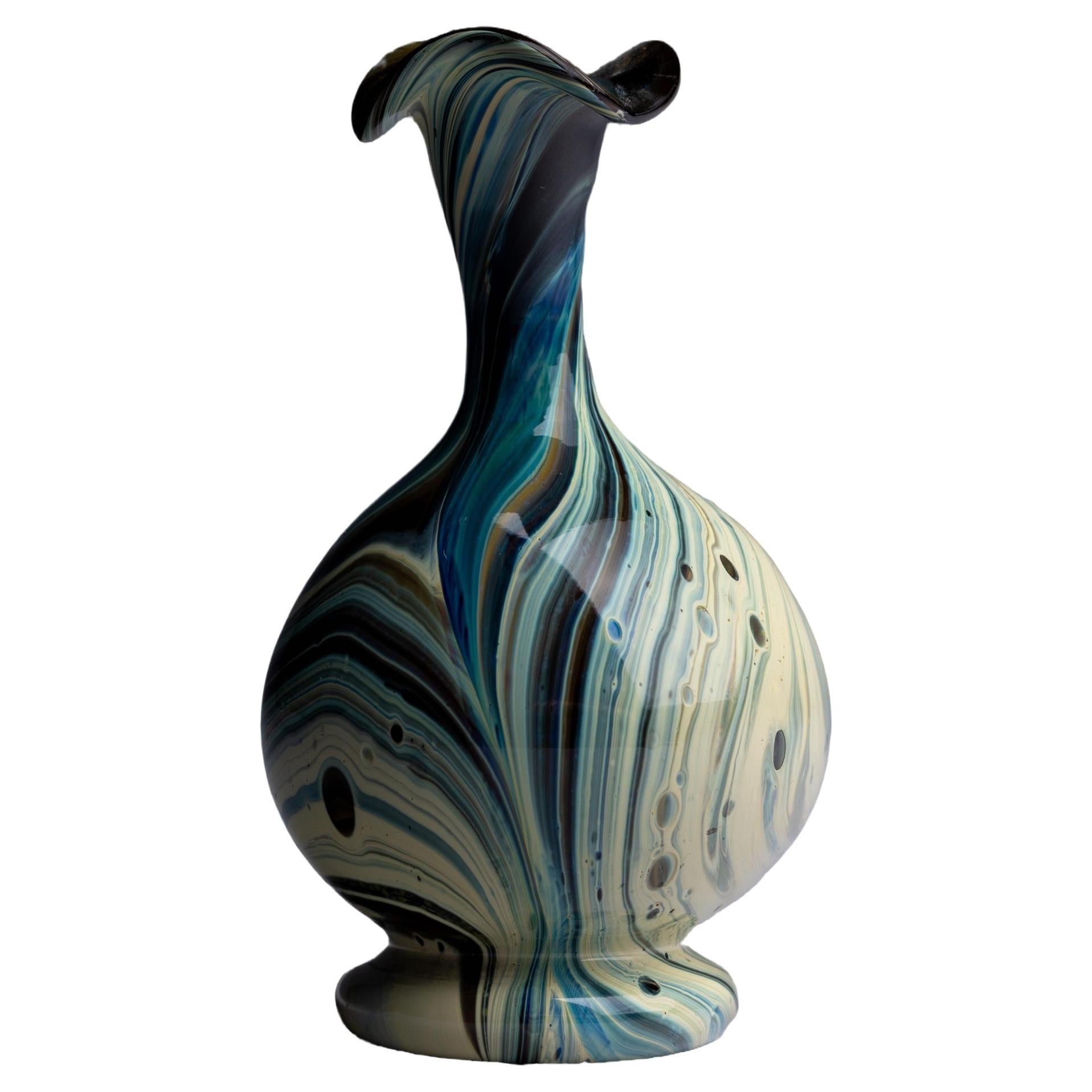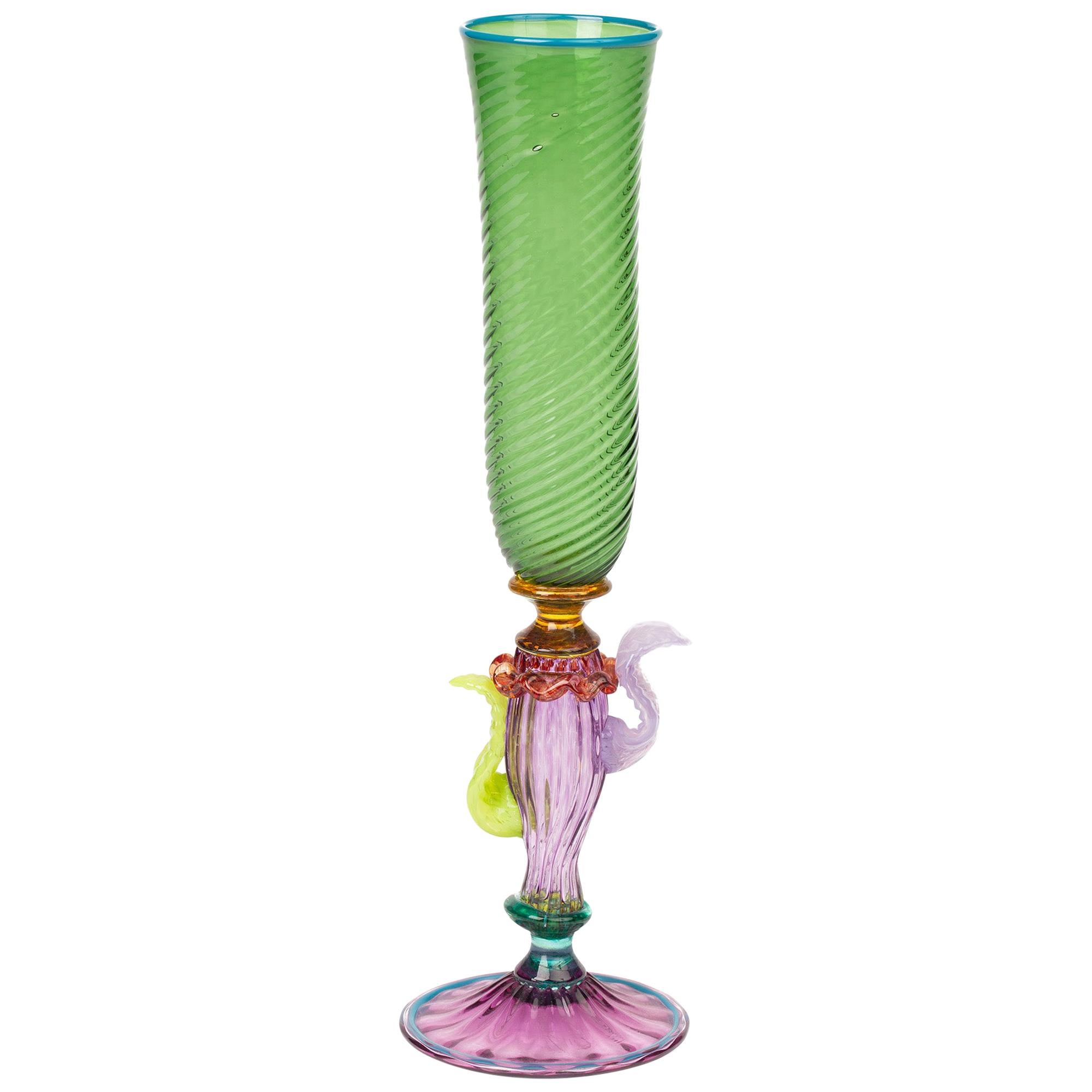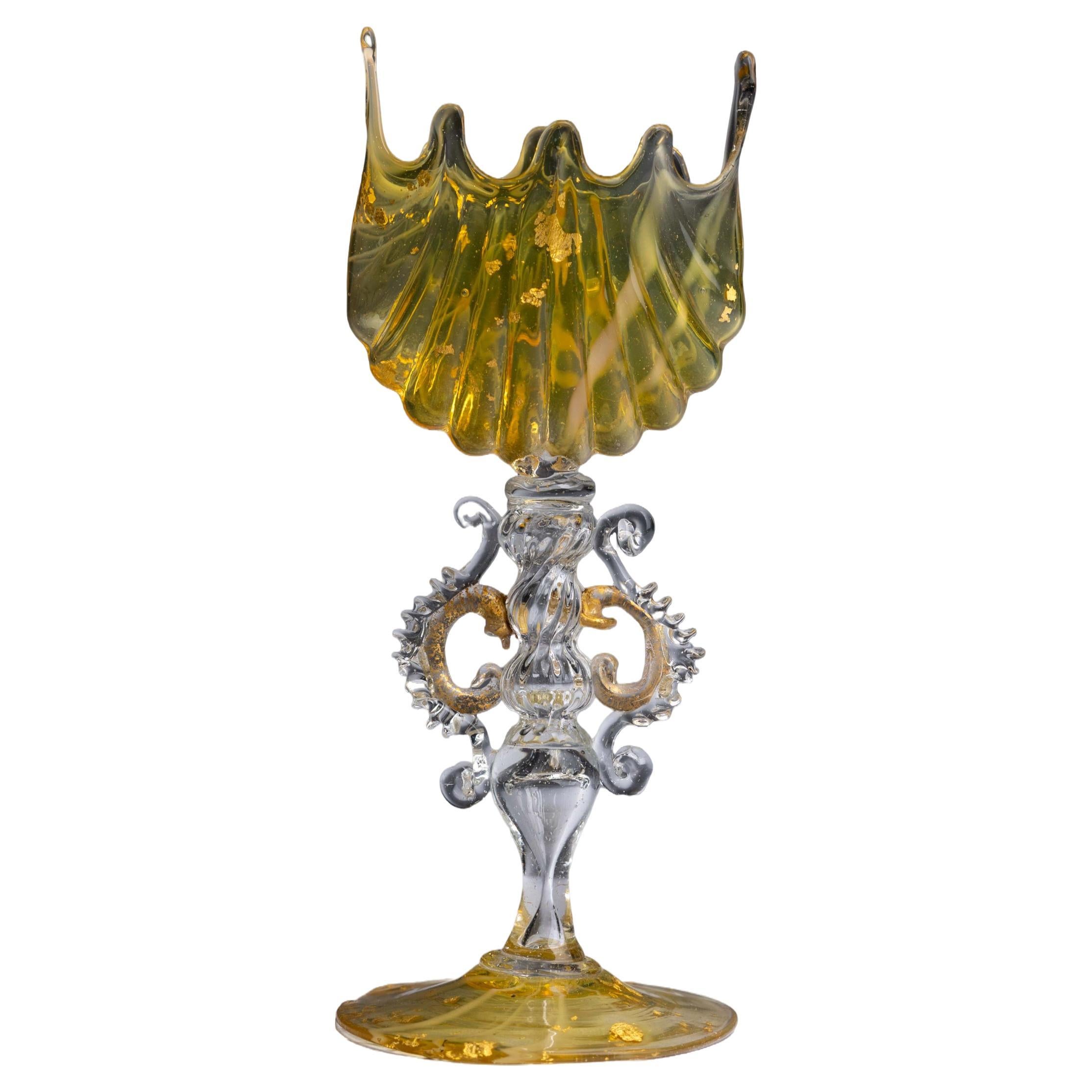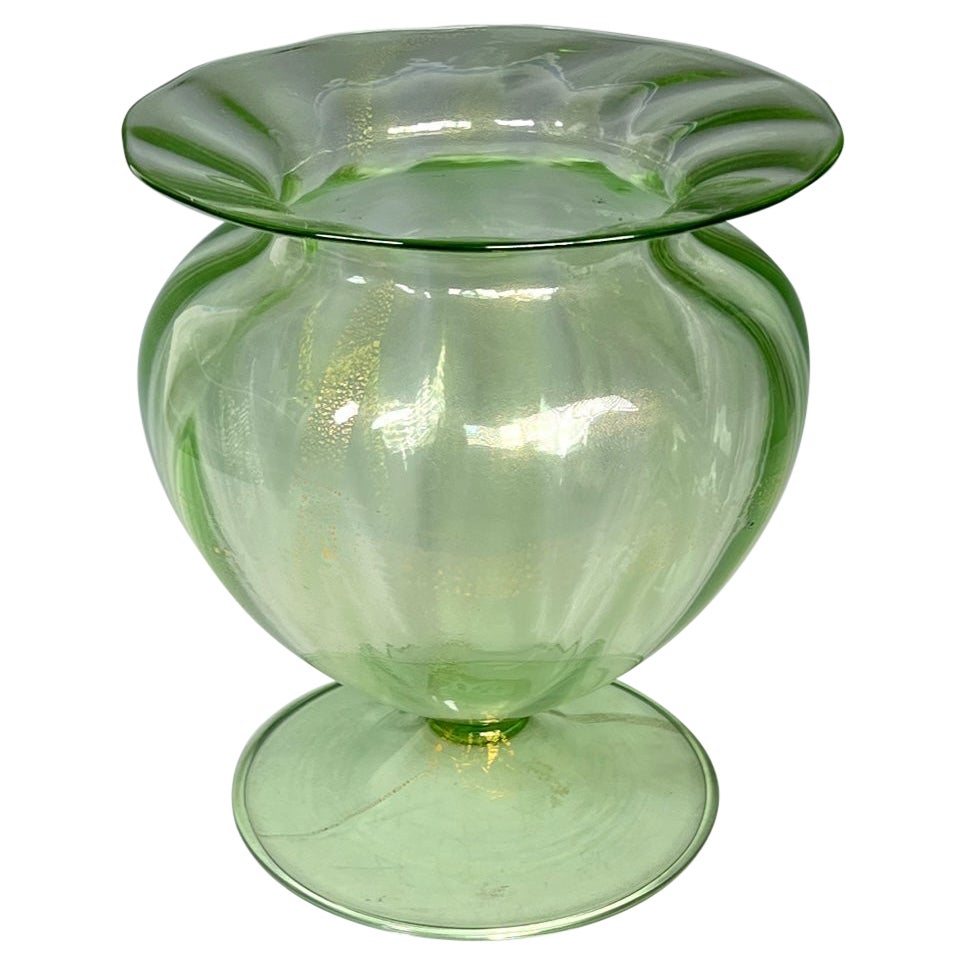Salviati Miniature Glass Tazza
About the Item
- Creator:Antonio Salviati (Maker)
- Dimensions:Height: 1.5 in (3.81 cm)Diameter: 3.75 in (9.53 cm)
- Style:Classical Roman (In the Style Of)
- Materials and Techniques:
- Place of Origin:
- Period:
- Date of Manufacture:circa 1880
- Condition:Wear consistent with age and use.
- Seller Location:New York, NY
- Reference Number:1stDibs: LU1061426168352
Antonio Salviati
Not only did Salviati support the revival of Venice’s flagging Murano glass industry in the 19th century, but the company also became world-renowned for its innovative glassmaking techniques, revolutionizing the art of mosaics and glassware design.
The story of Salviati glass begins with Vicenza-born lawyer and entrepreneur Antonio Salviati. His love of Murano glass art and mosaics inspired him to establish his own mosaic and glass manufacturing firm, the Salviati Dott. Antonio fu Bartolomeo company, in Venice in 1859. Glassmakers in the region had been weathering a dismal political climate and growing competition in neighboring countries, and Salviati had initially hoped to revive Murano glassmaking in order to restore deteriorating mosaics in local cathedrals.
In 1864, Salviati exhibited a monumental glass mosaic at the “First Glassmakers’ Exhibition,” which won the gold medal. His award-winning mosaic solidified his company’s reputation as a first-rate glassmaker, which soon drew the attention of international investors, particularly investors from Great Britain.
In 1866, Salviati and C. opened in London with the support of historian William Drake and diplomat Sir Austen Henry Layard. Meanwhile, the Salviati company established its headquarters on the Rio dei Vetrai in Murano.
Throughout the late 1800s, Salviati and C. expanded its production to include household glassware and serveware and decorative objects such as cups, glasses, amphoras and vials. Salviati also received commissions to produce mosaics for St Paul’s Cathedral and the Houses of Parliament in London, the Paris Opera House and the Viceroy of Egypt’s Palace in Alexandria.
After Antonio Salviati died in 1890, his sons Giulio and Silvio took over the company. The Barovier family — a dynasty that stretches as far back as 1295 — bought the manufacturer in 1883, and a glass master named Maurizio Camerino, who had honed his skills at Salviati, was appointed to lead the company. Camerino’s children took the reins following the glass master’s death in 1931 and launched a successful lighting line of table lamps and chandeliers after World War II.
Throughout the 20th century, Salviati participated in several Venice Biennale exhibitions from 1958 to 1972. In 1962, the company was awarded the Compasso d’Oro prize for the Marco vase, designed by architect Sergio Asti.
Since its acquisition by the Umana group in 2015, Salviati has collaborated with numerous renowned designers such as Federico Peri, Davide Bruno, Renzo Stellon, Alberto Lago and Anna Gili. Salviati's pieces can be found in the collections of the Museum August Kestner in Hanover, Germany, the Museum of Modern Art and Corning Museum of Glass in New York, the Eretz Museum in Tel Aviv, Israel, and the Murano Glass Museum in Venice.
The collection of antique Antonio Salviati glass on 1stDibs includes serveware, decorative objects and more.
- ShippingRetrieving quote...Ships From: New York, NY
- Return PolicyThis item cannot be returned.
- Mughal Indian MiniatureLocated in New York, NYThis Mughal miniature was painted at one of the princely courts of India. It depicts a raven-haired princess in a gold-trimmed saffron-colored silk sari. Under a glowering evening sky she dawdles on a white marble terrace, with a pet fawn on a leash, before a landscape dotted with buildings nestled amongst trees beyond a river. Her hair, falling loosely about her shoulders, rather than carefully dressed on her head, indicates that she is a maiden. The overall mood is one of expectancy. Perhaps walking a pet and catching an evening breeze is a pretext to escape palace scrutiny for a lovers’ assignation. In Mughal India tender sentiments were a bridge to the erotic – and if this seems contradictory, so too is the balance of realism and caricature, and naturalism with the schematic. Both are hallmarks of miniatures painted in this place and time. The earliest Mughal Indian miniatures date to the 16th century. They were inspired by those painted at the refined Moslem courts of the neighboring Persian empire. They incorporated figures in spite of the Moslem faith’s proscription against depicting the human form. Such was the nature of sophisticated courtly life everywhere that beauty and pleasure trumped systems of morality. This was no less the case at the provincial Indian courts, where our miniature, marked by a charming pictorial naiveté, was most likely painted. Yet the artist was undeniably accomplished. His command of perspective, introduced by Jesuit missionaries in the 17th century, is seen in the landscape, which rolls back to a distant horizon, contrary to the flat two-dimensional ones following Indian-painting traditions. And if Mughal artists were influenced by Western art, the compliment was returned by Rembrandt and Sir Joshua Reynolds, among others, who collected Indian miniatures (as did, perhaps, Giovanni Bellini who painted in Mughal style the famous miniature of a Persian man...Category
Antique 18th Century Indian Anglo-Indian Paintings
MaterialsPaper
- George III Silver Lusterware VaseLocated in New York, NYThis elegant vase of attenuated proportions was given an unusual silver-luster glaze, and embellished with two medallions on a military theme. One depicts a young soldier with a swor...Category
Antique 1790s English Neoclassical Urns
MaterialsPorcelain
- Large Blanc de Chine Berlin Porcelain VaseBy KPM PorcelainLocated in New York, NYThis tall, slender, blanc de chine porcelain vase was made around 1910 in Berlin by KPM, and was probably designed by Alexander Kips. Blending elements of the Art Nouveau and Rococo ...Category
Antique Early 1900s German Art Nouveau Vases
MaterialsPorcelain
- Art Nouveau CentrepieceLocated in New York, NYThis ravishing Art Nouveau silver plated centrepiece is decorated with butterflies, flowers, and budding tendrils, and retains the original applied patina and cobalt-blue-glass liner...Category
Antique Early 1900s German Art Nouveau Planters, Cachepots and Jardinières
MaterialsSilver Plate
- Japanese Scholar's ObjectLocated in New York, NYThis natural gourd was sliced at the top, hollowed out, and lacquered in black inside, around the rim, and on the bottom where it was signed by the artisan with Chinese and Japanese ...Category
Early 20th Century Japanese Organic Modern Vases
MaterialsLacquer
- Napoleon III Cut Crystal and Ormolu VaseLocated in New York, NYIn the early 19th century the typical, but fine flower vase was made of porcelain. The better ones were mounted in gilt bronze. But the most fashionable were of cut crystal and gilt ...Category
Antique 1850s French Napoleon III Vases
MaterialsCrystal
- 19th Century Murano Italian Glass Vase by SalviatiBy Antonio Salviati, SalviatiLocated in Fort Lauderdale, FLA Murano glass vase made by glass masters Salviati & Co in the late 19th century with a beautifully marbled calcedonio design. This Murano glass vase, made by Salviati & Co. circa 1...Category
Antique 1880s Italian Renaissance Revival Vases
MaterialsBlown Glass, Murano Glass
- Antonio Salviati Antique Venetian Revival Art Glass Stem VaseBy Antonio SalviatiLocated in Bishop's Stortford, HertfordshireA stunning and elegant Italian Murano Renaissance Revival art glass stem vase designed by Antonio Salviati in the late 19th century. This tall glass ...Category
Antique Late 19th Century Italian Renaissance Revival Vases
MaterialsBlown Glass
- Salviati Venetian Antique White Aventurine Flecks Italian Art Glass DecanterBy Antonio Salviati, SalviatiLocated in Kissimmee, FLBeautiful antique Venetian hand blown copper aventurine and twisted white ribbons Italian art glass decanter with shot glass stopper. Docum...Category
Antique Late 19th Century Italian Victorian Bottles
MaterialsGlass, Art Glass, Murano Glass, Blown Glass
- 19th Century Salviati Murano Italian Goblet VaseBy Antonio Salviati, SalviatiLocated in Fort Lauderdale, FLA Murano glass miniature goblet made by glass masters Salviati & Co in the late 19th century with yellow and clear glass with flecks of gold twisted into an incredibly intricate shap...Category
Antique 1880s Italian Renaissance Revival Vases
MaterialsBlown Glass, Murano Glass
- Glass cut glass tazzaLocated in Dallas, TXA handsome cut glass tazza or compote. Pieces such as these have been traditionally used for serving food and drink as well as for display. These items wer...Category
20th Century Vases
MaterialsGlass
- Murano Venetian Hand Blown Green & Gold Vase Centerpiece SalviatiBy Antonio SalviatiLocated in Great Barrington, MAThis lovely hand blown Venetian green footed vase with optic ribbed decoration can be used as both a vase or centerpiece. It is decorated with gold l...Category
Mid-20th Century Italian Glass
MaterialsGlass






